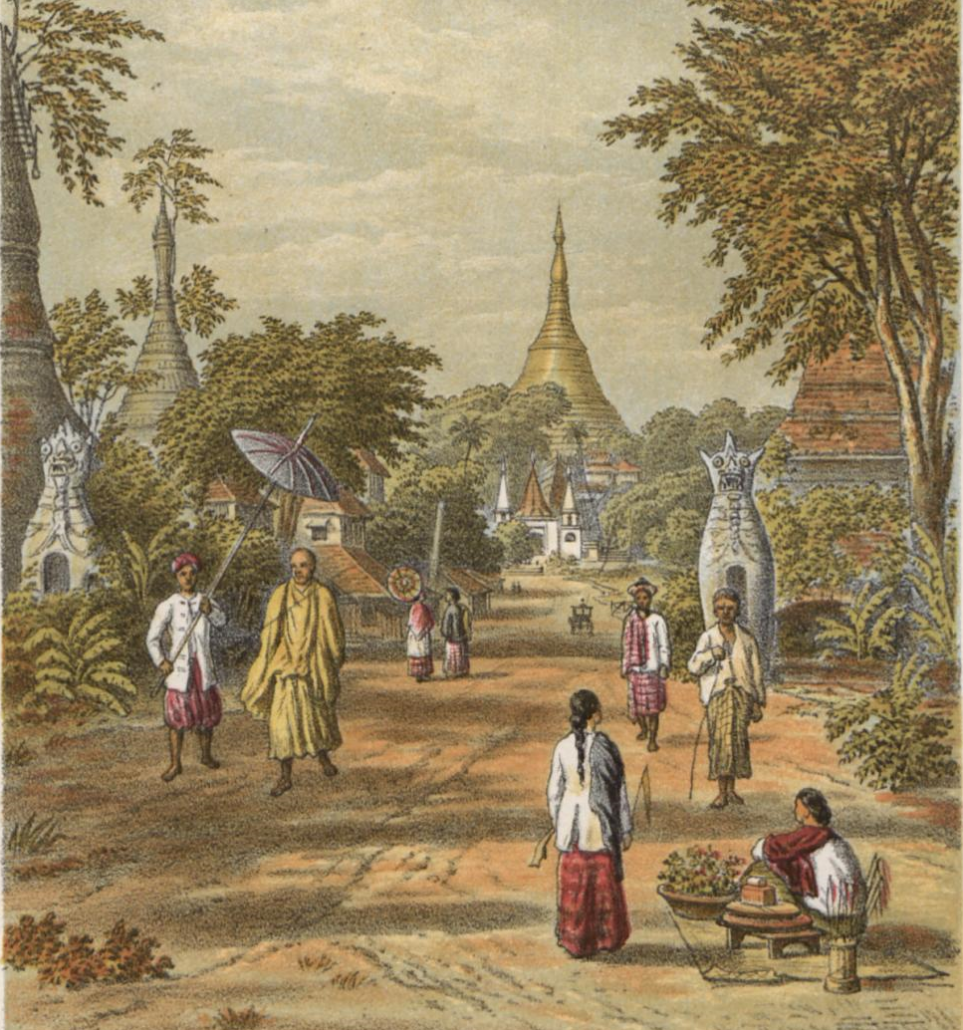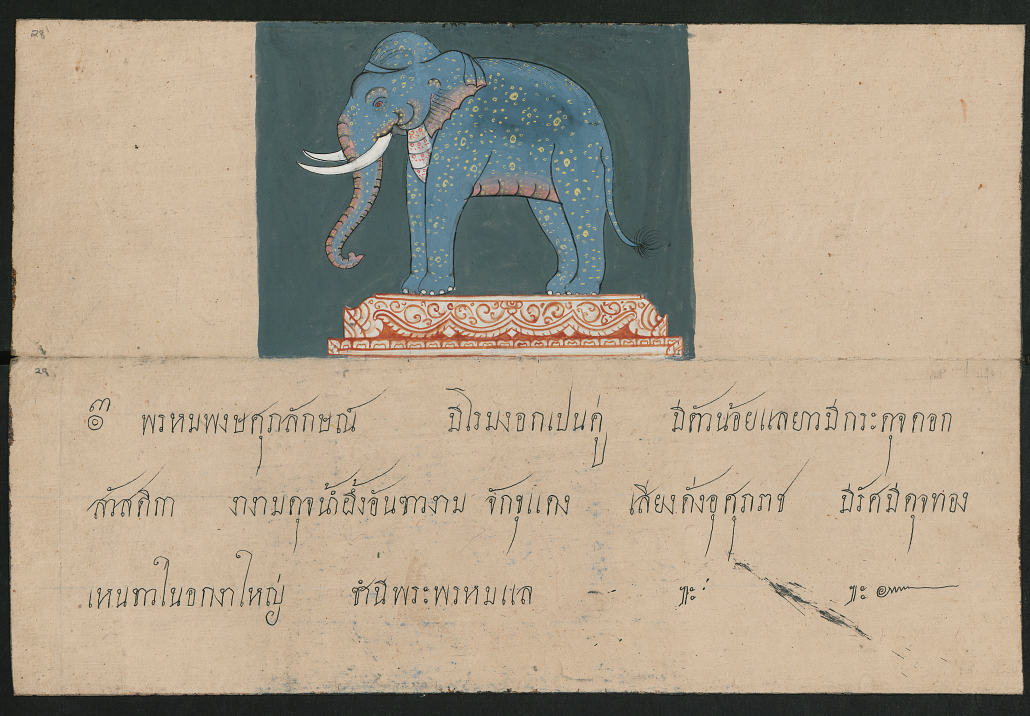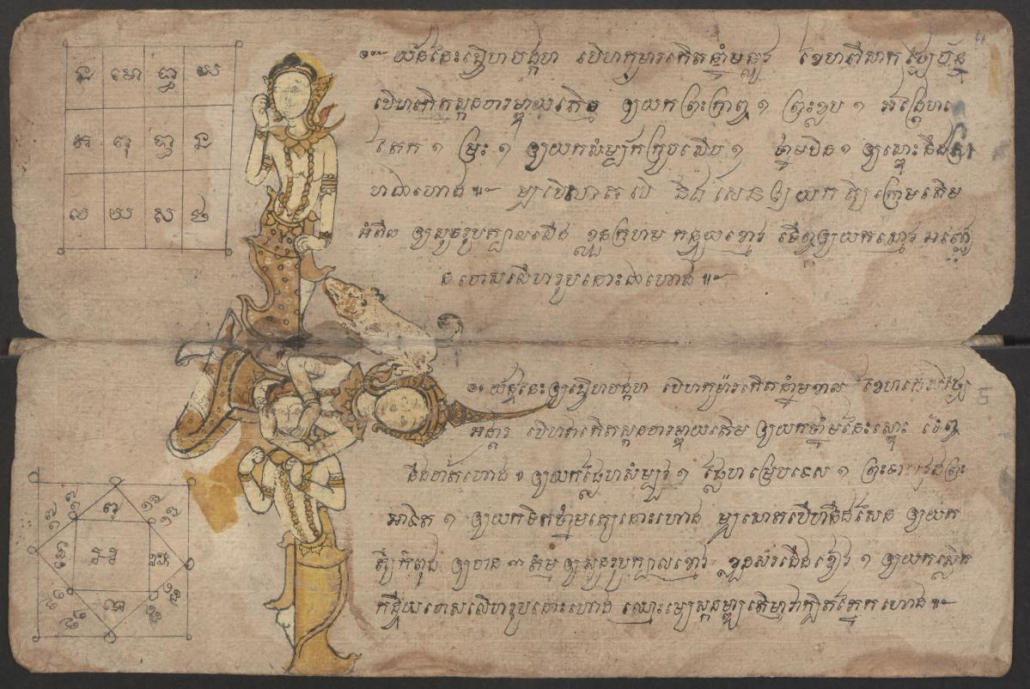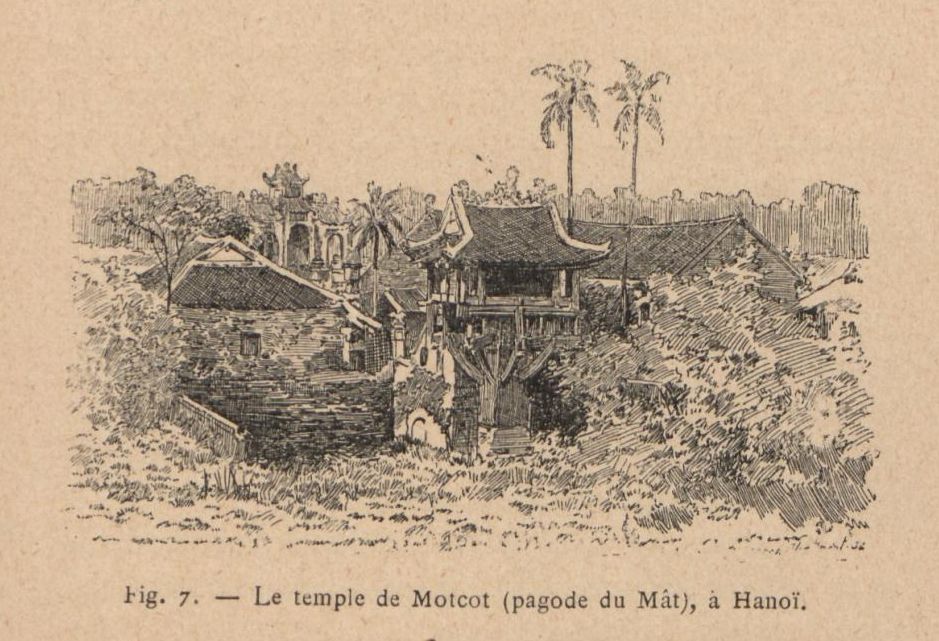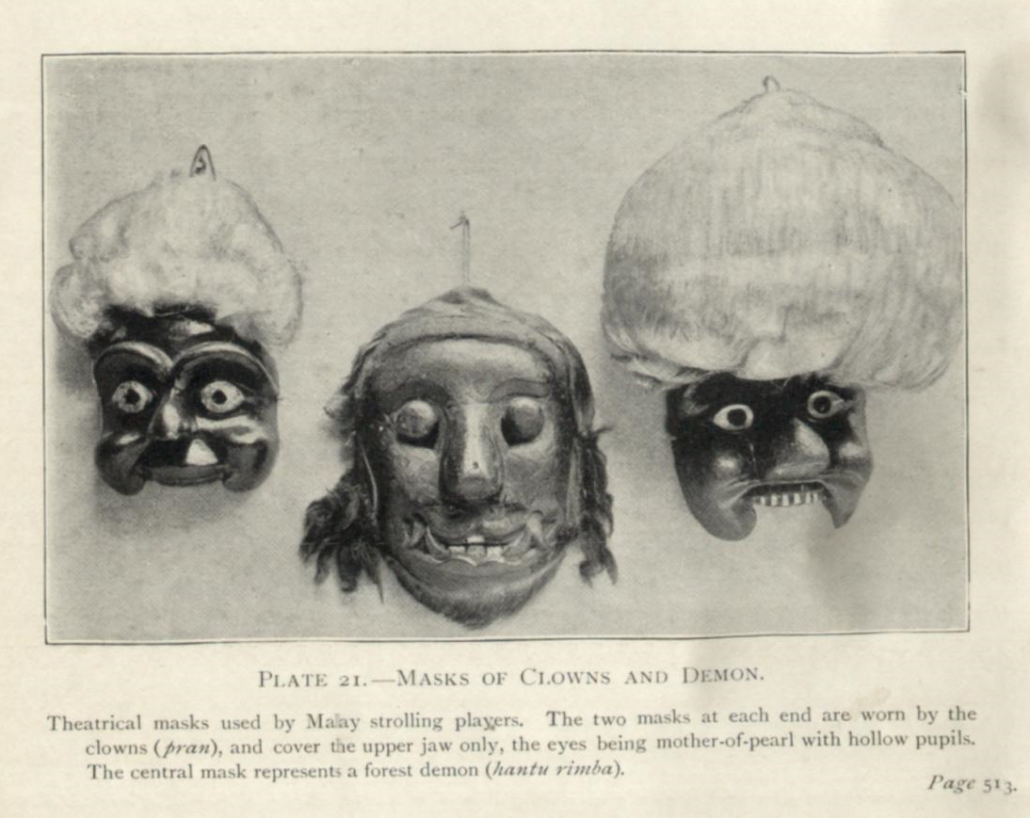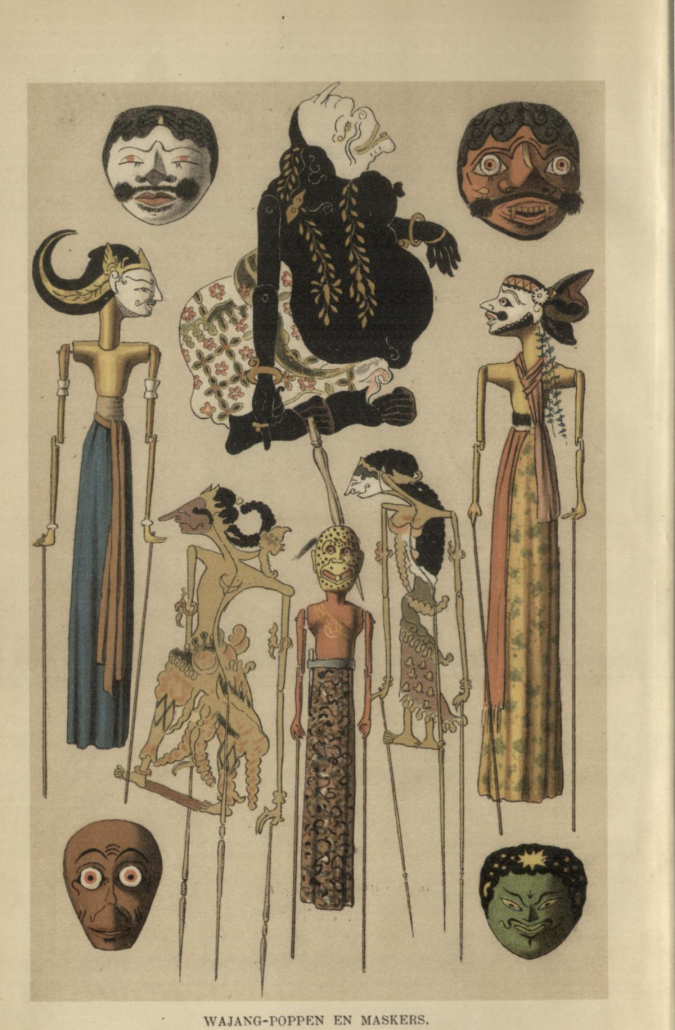The Southeast Asia Collection of the SPK
With over 100,000 volumes, the Southeast Asia Collection of Staatsbibliothek zu Berlin is the most extensive collection of its kind in Germany and one of the most important Southeast Asia collections worldwide.
Southeast Asia, being an extraordinary heterogeneous and dynamic region, covers 4.5 million km² and is thus larger than the European Union (4.1 million km²). Southeast Asia includes 11 countries with a combined population of about 655 million people (approx. 8.5% of the world population).
Geographically, the region divides into mainland and maritime Southeast Asia. The mainland includes the three Indo-Chinese countries — Vietnam, Cambodia and Laos — as well as Thailand and Myanmar (Burma), Peninsular Malaysia and Singapore. Maritime Southeast Asia includes Indonesia, parts of Malaysia, Brunei, East Timor and the Philippines. The particularities of the ethnic groups, cultures and beliefs, economies, politics and history of this part of Asia give a great impulse for the development of the entire region. The diversity of Southeast Asia is reflected in the variety of publications.
The collection includes publications from all 11 Southeast Asian countries. In addition to a wide range of westernlanguage literature on the individual countries, extensive holdings of original-language literature and more than 2,000 Southeast Asian manuscripts are particularly noteworthy.
Mainland Southeast Asia
Myanmar
The Myanmar collection comprises a rather small part of Staatsbibliothek zu Berlin’s Southeast Asia collection, and yet it is the largest Myanmar collection in libraries in the German-speaking world. It contains several thousand printed publications and about 700 manuscripts. The beginning of the collection dates back to the early 1980s. In 1983, a transliteration system was implemented within the library, laying the foundation for the use of Myanmar language in its catalog. The library only started to use the Myanmar script for cataloguing in 2015. Since then, all new entries have been included both in the original script and in transliteration.
A large part of the collection consists of publications of the lively Myanmar literary scene. In addition to many classics of fiction, literary journals with short stories and serials are also worthy of special mention. A large number of novels provide insights into different aspects of Burmese everyday life. The novel Land Under The Sky (Muiḥ-ok-mre-praṅ, 1962) by Min Aung, for example, describes life in the countryside. The lives of various women are the subject of the novel Kathit Blossom – Ka-sac-panḥ (1963) by Khin Hnin Yu. In their books, U Hla (Foreign Life Paths – Ma-nīḥ-taị bha-va kha-rīḥ, 1971) and Maung Thara (Who Lures the Cat Out? – Kroṅ-kui hay-sū khrū-chvai-peḥ-ma-lai, 1977) process their own experiences in Burmese prisons in the 1950s. The fight for independence is also a popular literary subject, as in Many Days (Nẹ-poṅḥ myāḥ-cvā, 1972) by Soe Naing or Our Comrades of Yore (Ta-khā-tunḥ-ka duị rai-bhō, 1963) by Min Shin.
In addition to all these novels, the collection of Myanmar books also includes works from many other fields such as literary studies, poetry, history, politics, Myanmar law, Buddhism, art, architecture, anthropology, education, linguistics and grammar.
More details and information about Myanmar literature are available in this blog post.
Another part of the Staatsbibliothek’s holdings is the photo collection of the East German, GDR, diplomat Otto Esche. This collection of almost 20,000 pictures not only documents everyday life in Myanmar in the 1970s but also offers many insights into Myanmar culture. Among them are detailed photographs of the ornamental designs on pagodas or photographs of individual step sequences of Myanmar dances.
Thailand
The Thailand collection contains over 15,000 books, of which over 5,000 are in Thai. The oldest books date back to the 19th century. A part of the collection was originally in the holdings of the former Seminar für Orientalische Sprachen (Seminary of Oriental Languages) in Berlin. The new acquisitions come from all areas of the humanities and social sciences, especially history, anthropology, religion as well as literature and linguistics, contemporary and Buddhist art.
Staatsbibliothek zu Berlin also owns about 250 Cremation Volumes (Nangsu anuson ngansop). The Thai tradition of producing “memory books” dates back to 1880, when the first memory book was published to mark the death of Princess Karnabhorn Bejaratana. Memory books are compiled by the family of a deceased person and distributed at the cremation ceremony. For several decades now, the works – sometimes with many volumes – not only document the private and professional life of the deceased, but also contain reprints of publications of the deceased (such as pieces by Prasit Silpabanleng, a composer and national artist who died in 1999) or reprints of historical chronicles or, of religious, fictional, or non-fictional works (such as a handbook on medication and diseases in the memorial book of the nurse Cholatip Sīsai).
In Buddhism, the dissemination of literature is a form of tham bun (literally: to do merit) in order to collect good karma for oneself or for others. Especially for the social sciences, these books are a rich source of information. Most of the volumes at Staatsbibliothek date from the years 1950 to 2015.
Please contact the East Asia Department if you wish to consult these books.
The Thai Royal Family is also of great importance for the modern Thai society. The Staatsbibliothek owns a collection of more than 250 publications on various topics concerning the Thai Royal Family. These include biographies, speeches, publications on state visits and travels of members of the Royal House, especially, King Bhumibol Adulyadej, who died in 2016, documentaries on his numerous royal projects throughout the country, and publications by the King on lifestyle and religion.
The Digital Library of Northern Thai Manuscripts is an important primary source for studying the traditional literature of Northern Thailand. It contains digitised copies of more than 6,000 manuscripts, ranging thematically from religious texts, chronicles, astrology, customary law, and grammar to poetry, jataka stories, epic tales, and folktales. They are written in the languages of Northern Thailand (Lan Na), Tai Khuen, Tai Lue, Lao, Shan, Burmese and Pali and in various scripts. [lannamanuscripts.net]
In 2004, Staatsbibliothek zu Berlin was able to expand its Thai holdings by purchasing the collection of Christian Velder, a Germanist and translator of Thai literature. This collection also includes a large number of palm leaf manuscripts and books in Cambodian.
Also of great value for the development of the Thai holdings was the acquisition of the collection of Josef Rohrer who lived and worked in Thailand after finishing his work at the Federal Language Office. He is known to the specialist world for his German-Thai dictionary.
In the Oriental and East Asia Reading Room in the library’s building at Potsdamer Platz, users will find, among other things, a large selection of Thai dictionaries and the encyclopedia of Thai culture, which comprises more than 60 volumes.
The manuscript collection contains about 200 manuscripts in Thai and about 100 manuscripts in languages of Northern Thailand.
Laos
The Lao collection comprises about 3,000 volumes, including about 1,000 volumes in Lao. Due to the difficult information and procurement situation, the library only started to collect literature in Laos systemically since 2005. To this day, the Lao book market has remained small.
The Lao collection documents many aspects of the country’s development. One finds, for example, early expedition reports from the 19th century, and texts on the teachings of Buddhism and animist beliefs. The collection also includes the famous Hindu epic Ramayana in Laotian version. Governmental publications and those of the Lao People’s Revolutionary Party give an impression of the structure of the political system, which is a mixture of the former Eastern Bloc model and a market economy.
An important source of information on Lao’s rich literary tradition, which dates back to the 15th century, is the Digital Library of Lao Manuscripts. It contains more than 12,000 digitised texts, mostly palm leaf manuscripts, in different languages (Lao, Lan Na, Tai Lue, some in Tai Nuea, Tai Dam, etc.) and writings related to Buddhism, folk tales, Jatakas, didactic literature, chronicles, astrology, legal texts, etc. Staatsbibliothek zu Berlin’s manuscript collection contains about 50 manuscripts in Lao.
Cambodia
In: Einzelhandschrift in Khmer- und Thai-Schrift : Astrologie , 18XX (Digitale Sammlung der Staatsbibliothek zu Berlin)
The most extensive holdings of Cambodian originals in Germany and Europe can be found in Berlin’s Staatsbibliothek. About 3,000 volumes of the collection with more than 5,000 volumes are in Khmer (Cambodian). New publications in Khmer have been acquired systematically and regularly since the mid-1990s.
Particularly noteworthy is a large number of novels from the 1960s to the present. Most of the novels from the 1960s and 1970s come from the collection of the Khmer scholar Rüdiger Gaudes, who taught German in the 1960s and early 1970s at Royal University of Phnom Penh and who started to learn Khmer at that time. Many of these novels reflect life in the Lon Nol period from 1970-75, when the Vietnam War was extended to Cambodia. The themes of the novels of the 1980s are mainly love and life in times of civil war after the Khmer Rouge period, partly interspersed with political propaganda of the 1980s.
The author Nan Chan is an example for this kind of novels. From the 1990s onwards, numerous old novels were reprinted, especially by the publishers Sri Punatan and Beanteay Sri. Some of these reprints were acquired by the library. The works of the prolific writers Pal Vannariraks, Mao Samnang and Ouk Samnang of the 1990s-2000s are just as much a part of the collection as those of the young writers of the present such as Thoeun Vuthy, Meysan Sotheary.
Particularly in the 1990s, when the Cambodian book market began to develop and became more diverse, Staatsbibliothek acquired numerous publications in the field of grey literature, mainly publications by NGOs on human rights, democratisation, corruption, the social situation of the workers, environmental issues, but also reports, legal texts, statistics, research and reports published by universities, NGOs, parties, and ministries.
Staatsbibliothek houses a complete Tripitaka edition in Pali with Khmer translation. It is the 1994 reprint of the 110 volumes edition of the Buddhist Institute, first published in 1969. In addition, there are about 90 Khmer manuscripts in the possession of Staatsbibliothek.
Vietnam
With over 20,000 volumes, including more than 11,000 volumes in Vietnamese alone, the collection on Vietnam is, next to the Indonesian collection, the most extensive collection of all the collections from and about Southeast Asia. This is partly a result of the rather welldeveloped book market in Vietnam and the library’s long-standing relations with Vietnamese book traders.
The beginnings of the collection date back to a donation by the Vietnamese scholar Truong Vinh Ký (1837-1898). The writer and translator, who wrote over 100 works himself and was particularly committed to the dissemination of Chữ Quốc Ngữ, the romanised spelling of Vietnamese that is still used today, donated part of his writings to the then Königliche Bibliothek in Berlin in 1892.
The collection contains both early travelogues from the 17th and 18th centuries, in which Vietnam is mentioned, and documents from the French colonial period (1867/1884-1954). However, the focus of the collection is on the modern era. From the 1950s/1960s onwards, systematic collection building started. A large number of Vietnamese and Western publications deal with the Vietnam War, and one can find an ongoing number of Vietnamese publications with the national hero Hồ Chí Minh.
The collection also includes the most comprehensive reference work on the history of Vietnam from its beginnings to the present, published in Hanoi in 15 volumes (Lịch sử Việt Nam, Hà Nội, Nhà xuất bản Khoa học xã hội, 2017). Numerous publications deal with Vietnam’s ethnic minorities such as the Tai-Kadai people, the Muong, Hmong, Khmer, Cham, Ra-glai, Gia-rai, and others.
In: L’art indo-chinois von Albert de Pouvourville, Paris, Ancienne Maison Quantin, 1894 (Digitale Sammlung der Staatsbibliothek zu Berlin)
The extensive collection of literary works includes Vietnamese novels, collections of poetry and short stories by well-known writers such as Vũ Trọng Phụng, Nguyên Hồng, Ma Văn Kháng, Nam Cao, Nguyễn Huy Thiệp, Chu Lai, Hồ Anh Thái, Y Ban, Nguyễn Ngọc Tư, Lê Minh Khuê, Nguyễn Bình Phương, Bảo Ninh.
In addition to a number of Vietnamese newspapers and magazines from Vietnam such as Công Báo (Official Journal of Vietnam), Đài đoàn kết (Central Organ of the National Front), Nghiên cứu lịch sử (Journal for Historical Research), Ngôn ngữ (Journal for Linguistics), Tạp chí Hán Nôm (Journal for the Han Nom Script), Dân tộc học (Ethnographic Studies), registered users also have online access to the renowned Journal of Vietnamese Studies (Berkeley, California).
Singapore
Staatsbibliothek zu Berlin has about 1,500 titles on Singapore. These are publications in the fields of history, politics, economics, geopolitics, art, religion, ethnic relations, and literature. The vast majority of the books are in English. There are also a number of titles in Chinese, which is one of the official languages in Singapore along with English, Malay and Tamil. Among them is a multi-volume edition of the works of the writer and playwright Kuo Pao Kun (The Complete Works of Kuo Pao Kun, Xinjiapo, 2005-2012).
Singapore is home to the ISEAS – Yusof Ishak Institute, one of the leading Southeast Asian research centres and publisher of scholarly books and journals on political and social developments in Southeast Asia and the Asia-Pacific region. CrossAsia offers registered users access to more than 750 e-books from 1980 until now, with regular additions of new publications. The collection, covering the whole of Southeast Asia, includes country studies, publications on ASEAN and the series “Trends in Southeast Asia” and “Southeast Asian Affairs”. [ISEAS List of Titles]
For readers interested in development concepts of the state of Singapore, the speeches and interviews of the state founder Lee Kuan Yew from 1950-2011 are a treasure trove (The Papers of Lee Kuan Yew: Speeches, Interviews and Dialogues. National Archives of Singapore).
Maritime Southeast Asia
Malaysia
In: Malay magic : being an introduction to the folklore and … , 1900 (Digitale Sammlung der Staatsbibliothek zu Berlin)
The Malaysian book market comprises about 20,000 Malay-language publications per year. The Malaysian collection of Staatsbibliothek contains many academic publications, especially in the fields of anthropology, art, architecture, literature, and linguistics. Titles in political sciences form a special focus: they not only include biographies of Malaysia’s most important politicians and political theorists, but also analyses of elections and political changes in the recent history of the state.
Religious literature forms a large part of the collection: titles range from Quranic exegesis and Hadith interpretations to Islamic philosophy and cross-sectional areas such as Islamic law, theories of Islamic politics, or Islamic finance.
The collection also has much to offer for those interested in the history of Malaysia. Recently, the range of digital resources made available in CrossAsia to its users has expanded: a particular example is the database Foreign Office Files for South East Asia, 1963-1980, published by Adam Matthew Digital, which consists of two parts: Cold War in the Pacific, Trade Relations and the Post-Independence Period, 1963-1966; and Foundations of Economic Growth and Industrialisation, 1967-1980. CrossAsia-users access this collection here.
This collection of correspondences, political speeches, administrative letters and press reports focuses on the state of Malaysia from its foundation in 1963. It provides a historical picture of the development of the young, post-colonial state in the first two decades after its foundation. The conflict between Indonesia and Malaysia as a result of the founding of the state, topics such as trade, economic development, authoritarian rule, as well as communism and the East-West conflict are central to the collection. It also provides insight into the political and economic challenges of the industrialisation of the region in the 1960s and 1970s.
While the sales figures in the fiction section of the Malaysian book market are mainly dominated by love stories and romances, fictional literature in the Malaysian collection of Staatsbibliothek is more shaped by historical novels and adventure stories. The thematic range is extremely diverse, with examples such as the lives of Chinese pirates roaming the Strait of Melakka or the struggle for survival during a zombie apocalypse.
About 135 Malay manuscripts are listed in the catalogue of the manuscript collection. They are all written in the Jawi script based on the Arabic alphabet.
Brunei
The book market in Brunei is particularly small. Therefore, the library can only purchase a few publications on a regular basis. Especially outstanding from the Brunei collection are the many works about the sultanate itself, mainly provided by the tourist industry or illustrated books that capture the country and its monarchy in pictures.
Indonesien
Puppets of the Wayang-Theatre
In: Nederlandsch Oost-Indië , 1894 (Digitale Sammlung der Staatsbibliothek zu Berlin)
The collection of Indonesian publications includes works from all areas of the humanities. The vast majority is published in Bahasa Indonesia. To a lesser extent, the collection also includes publications in other regional languages such as Javanese, Sundanese, Balinese, Acehnese, or Batak. Particularly noteworthy is the wide range of anthropological works on life in the different societies inhabiting the islands of the archipelago, as well as Islamic literature, such as interpretations and exegesis of the Koran and Hadith.
In addition to scientific literature in the Indonesian languages, the collection also focuses on the country’s fictional literature. Here, too, the library continues to collect with its finger on the pulse of the times: for example, 17 of the 44 novels by the celebrated Indonesian author Tere Liye published until now have been aquired. In his books, he often tells fantastic stories of young protagonists. Bulan is about the 15-year-old boy Seli, who possesses secret magical powers and can hurl flashes with his bare hands. In Bumi, Seli’s girlfriend Raib plays the leading role. She only has to cover her eyes with her hands to become invisible. Tere Liye’s books, which are not written exclusively for a young audience, often refer to each other or form entire book series or even serialised novels.
The Indonesian collection also includes about 700 manuscripts. About half of these manuscripts are written in the Javanese language. The other half is in the languages Malay, Acehnese, Balinese, Sundanese, Batak, and Lampung. A team of Indonesian experts started a cataloguing project of the manuscripts in 2016. The result is a 900-page catalogue of all the Indonesian manuscripts of Staatsbibliothek zu Berlin. Some manuscripts have been digitised in the meantime and can now be consulted in Orient Digital, the database of Oriental manuscripts. By the way, this is also worthwhile for all those who do not speak Javanese, because the colourful and artistically executed illustrations alone will amaze you.
If you dig deeper into the collection, you will also come across special findings that you would not expect there in the first place. A small microfiche collection of documents, for example, with decrees and decisions of regional authorities as well as other administrative acts in Indonesia in the 1970s.
East Timor
The collection on East Timor is dominated by western language research literature from all disciplines of the humanities and social sciences. Among the books published in East Timor are a few dictionaries and textbooks in the official language Tetum. Many East Timorese publications are
Philippines
The Philippines collection contains about 3,000 volumes, most of them in English, some in Spanish and about 400 in Tagalog. There is also a small selection of books in some of the many other languages spoken in the Philippines such as Cebuano, Bikol, Ilokano or Hiligaynon.
The collection focusses thematically on the Philippine Revolution at the end of the 19th century, the Philippine national hero José Rizal (1861-1896), the role of the Americans in the Philippines, World War II and the role of Japan, Filipino migrant workers, inter-ethnic relations (Chinese and other ethnic groups), and religious conflicts in various parts of the Philippines.
An overview of the ethnic groups in the Philippines is given in the 15-volume work “Katutubo, profiles of Philippine cultural communities” (Ed.: National Commission on Culture and Arts [Philippines], Manila, 2009).
Among the new acquisitions on Philippine politics and economics are many publications on reforms of the political system, human rights, China’s growing role in the region, environment, and climate change.
Old accession journals show that in 1931 the then Preußische Staatsbibliothek (Prussian State Library), Berlin, acquired about 300 volumes of Ferdinand Blumentritt’s (1853-1913) library, an Austrian school teacher, expert on the Philippines and friend of Filipino writer and national hero José Rizal. Blumentritt is still present in the consciousness of the Philippine population today, as streets, squares and bus stops in Manila carry his name. His interest in the Philippines was very broad, as reflected in his collection of books on geography, agriculture, administration, Christianity, folk customs, folk music, languages, etc. Most of the books date from the 2nd half of the 19th century. They are available in the online catalogue of Staatsbibliothek. Some of them have already been digitised and are accessible in the digitised collection of the library.
Excerpt from the accession journal of the Blumentritt purchases, 1931-1932
Bibliography / Sources
Acta betr. Geschenke aus dem Orient u. Ostindien. Vol. 3 No. III. E. 17, 1889-1895.[Staatsbibliothek zu Berlin – Preußischer Kulturbesitz, Akten KB/PSB]
Götze-Sam, Claudia: Die Thailand-, Laos- und Kambodscha-Sammlung der Staatsbibliothek zu Berlin. In: BibliotheksMagazin 2, 2016, pp. 37-41
Grune, Christina: Truong Vinh Ky. Im Archiv der Deutschen Staatsbibliothek entdeckt. In: Von der Wirkung des Buches. Festgabe für Horst Kunze zum 80. Geburtstag, gewidmet von Schülern und Freunden, besorgt von Friedhilde Krause. Deutsche Staatsbibliothek, Berlin, 1990, pp. 54-65
